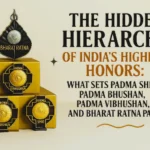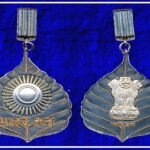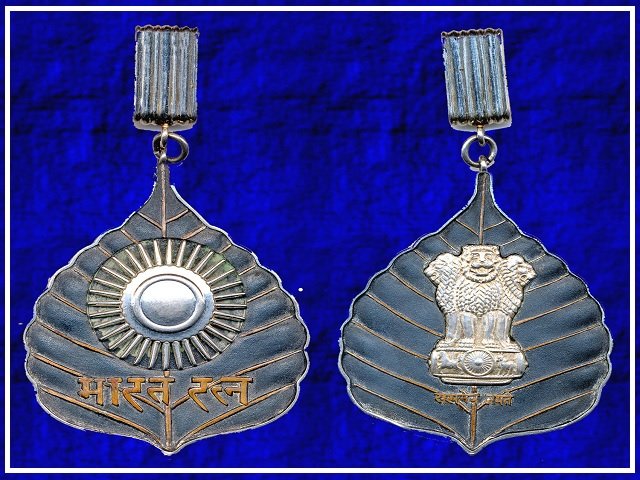The Relevance of Awards in Contemporary Society
Awards have long played a significant role in acknowledging and celebrating excellence across diverse domains such as arts, science, and sports. In contemporary society, their relevance is characterized by an intricate interplay between traditional recognition and the evolving landscape of digital accolades. As people increasingly engage with social media platforms, the nature of recognition has transformed, leading some to question whether formal awards continue to hold the same value as they once did.
The importance of awards extends beyond the recognition of individual achievements; they can profoundly impact careers and public perceptions. For instance, winning a prestigious award can propel an artist or scientist into the limelight, attracting opportunities and enhancing their credibility within their respective fields. Similarly, sports awards not only honor athlete accomplishments but also influence sponsorship and endorsements, significantly shaping professional trajectories. This interplay highlights the enduring significance of awards in motivating individuals to strive for excellence.
Moreover, data trends underscore a sustained interest in awards and their ceremonies. Recent surveys indicate that a considerable segment of the population still values formal recognition, often viewing it as a hallmark of success. While it is true that social media has democratized acknowledgment—allowing individuals to gain visibility through likes and shares—the respect and prestige associated with recognized awards endure. The contrast between ephemeral digital accolades and the gravitas of traditional awards raises pertinent questions about their comparative weight in public consciousness.
Overall, awards continue to serve as symbols of achievement and motivation. They remain essential touchstones for individuals across various professions, regardless of the fast-paced, digitally driven world we inhabit.
India’s Highest Civilian Awards: A Legacy of Recognition
India’s richest tradition of honoring achievements can be encapsulated in its highest civilian awards, which include the Bharat Ratna, Padma Vibhushan, Padma Bhushan, and Padma Shri. Established to recognize excellence across various fields, these prestigious awards play a vital role in acknowledging the contributions of individuals to the nation and society as a whole. The Bharat Ratna, India’s highest civilian award, was first instituted in 1954, and it signifies exceptional service in any field. In contrast, the Padma awards, rolled out in the same year, honor distinguished contributions primarily in arts, literature, science, and public service.
The criteria for these esteemed awards vary, emphasizing exceptional achievements and lifelong dedication. For instance, the Padma Vibhushan is awarded for “exceptional and distinguished service,” while the Padma Bhushan recognizes “distinguished service of a high order.” In total, the Padma Shri celebrates individuals for their significant accomplishments in a variety of domains, accentuating the diverse talent pool that India possesses. These awards not only uplift the recipients’ profiles but also motivate others to aspire for excellence in their respective fields.
Historically, the demographic landscape of awardees has evolved, reflecting changes in societal values and recognition patterns. For example, while early recipients were predominantly from established fields such as politics and education, recent years have seen a more diverse representation including grassroots activists and influencers from contemporary art forms. This shift underscores the awards’ adaptive nature and their relevance in modern India.
The public perception of these awards has been a topic of discussion and analysis, with recent surveys indicating a strong belief in the importance of recognizing contributions that align with national values. Infographics illustrating the trends in awarding, showcasing major recipients alongside their contributions, can provide a visual representation of this legacy and further highlight the profound impact these civilian honors have on the recipients’ lives and careers.
Gallantry Awards: Valor Recognized
In India, gallantry awards serve as a testament to extraordinary acts of bravery and courage, predominantly within the armed forces. The Param Vir Chakra, Mahavir Chakra, and Vir Chakra are the highest honors bestowed upon individuals who display exceptional valor in the face of adversity. Established at different times in India’s history, these awards signify the nation’s appreciation for selfless acts that protect its integrity and freedom.
The Param Vir Chakra, introduced in 1950, is the highest military decoration awarded for the most conspicuous bravery or the most exceptional operation. Following closely is the Mahavir Chakra, awarded for acts of gallantry in the presence of the enemy, and the Vir Chakra, recognizing actions that are equally brave but sometimes in less direct combat situations. Together, they comprise a proud legacy, highlighting not only the courage of the awardees but also contributing to the morale of the armed forces.

Heroic stories surrounding these awards resonate deeply in the national consciousness. For instance, the valor displayed by individuals like Major Somnath Sharma, the first recipient of the Param Vir Chakra, inspires future generations. His bravery during the 1947-1948 war against Pakistan remains a remarkable narrative of heroism that continues to motivate soldiers and civilians alike. Statistical data reveal that thousands of gallantry awards have been conferred throughout the years, with a notable representation from various regions and communities, showcasing the diverse tapestry of bravery across the nation.
Moreover, the significance of these honors transcends mere recognition. They play a crucial role in shaping public sentiment towards the armed forces, fostering admiration and respect for those who serve the country. These accolades not only honor the individual acts of valor but also strengthen the bonds between the military and the citizens they protect. The legacy of gallantry awards remains pivotal to India’s identity, instilling a sense of pride and unity across its vast and diverse population.
Sports Awards: Legacy and Motivation
In India, sports awards such as the Rajiv Gandhi Khel Ratna, Arjuna Award, and Dronacharya Award play a crucial role in shaping the landscape of athletic achievement. These prestigious recognitions serve not only as accolades but also as significant motivators for athletes at various levels. The Khel Ratna, the highest sporting honor in India, is awarded to individuals who have demonstrated outstanding performance in sports and games. In recent years, the number of awardees has seen a substantial increase, reflecting a growing recognition of excellence across diverse sports disciplines.
The Arjuna Award, established in 1961, acknowledges consistent outstanding performance by athletes and has evolved to include a broader spectrum of sports. Furthermore, the Dronacharya Award, initiated in 1985, recognizes coaches who have contributed significantly to the success of athletes. Collectively, these awards not only highlight individual accomplishments but also motivate rising talents to dream bigger and strive harder in their respective fields. Recent statistics indicate that the overall participation and performance rates in Indian sports have witnessed significant growth following the announcement of these awards. For instance, the 2020 Khel Ratna recipients played a pivotal role in inspiring youth participation in various sporting activities, leading to an increase in enrollment in sports academies by approximately 20%.
The influence of public perception surrounding these award ceremonies cannot be understated. They are often celebrated with much fanfare, drawing widespread media attention and fostering a culture of pride and enthusiasm in sports. This public visibility not only honors the recipients but also positions sports as an essential aspect of national identity, encouraging young individuals to pursue athletics with added zeal. The legacy of these awards transcends individual accomplishments and contributes to the broader growth of sports culture in India, marking a significant step towards nurturing future generations of athletes.








